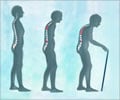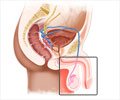Ready to know your osteoporosis risk? The new sensor offers a hassle-free finger-prick blood test that reveals five vital SNPs linked to osteoporosis risk.

Generic Platform for the Multiplexed Targeted Electrochemical Detection of Osteoporosis-Associated Single Nucleotide Polymorphisms Using Recombinase Polymerase Solid-Phase Primer Elongation and Ferrocene-Modified Nucleoside Triphosphates
Go to source). //
Combating Osteoporosis with Greater Sensitivity in Bone Health Monitoring
Early intervention is critical to reducing the morbidity and mortality associated with osteoporosis, a condition characterized by an elevated risk of bone fractures and which affects about 54 million people in the U.S., according to the International Osteoporosis Foundation. The most common technique used to measure changes in bone mineral density (BMD) — dual-energy X-ray absorptiometry — is not sufficiently sensitive to detect BMD loss until a significant amount of damage has already occurred. Several genomic studies, however, have reported genetic variations known as single nucleotide polymorphisms (SNPs) that are associated with increased risk for osteoporosis.‘Want to know your osteoporosis risk with just a finger-prick of blood? The newly developed electrochemical device can detect five specific single nucleotide polymorphisms (SNPs) associated with osteoporosis risk using only finger-prick blood samples. #osteoporosis #bonedisease #osteoporosisdiagnosis ’





The device involves an electrode array to which DNA fragments for each SNP are attached. When lysed whole blood is applied to the array, any DNA matching the SNPs binds the sequences and is amplified with recombinase polymerase that incorporates ferrocene, a label that facilitates electrochemical detection. Using this platform, the researchers detected osteoporosis-associated SNPs in 15 human blood samples, confirming their results with other methods. As the DNA does not have to be purified from the blood, the analysis can be performed quickly (about 15 minutes) and inexpensively (< $0.5 per SNP). Furthermore, because the equipment and reagents are readily accessible and portable, the researchers say that the device offers great potential for use at point-of-care settings, rather than being limited to a centralized laboratory.
The technology is also versatile and can be readily adapted to detect other SNPs, as the researchers showed previously when identifying drug resistance in Tuberculosis mycobacterium from sputum and cardiomyopathy risk from blood. Although the device does not diagnose osteoporosis itself, it might help physicians identify people whom they should monitor more closely.
Reference:
- Generic Platform for the Multiplexed Targeted Electrochemical Detection of Osteoporosis-Associated Single Nucleotide Polymorphisms Using Recombinase Polymerase Solid-Phase Primer Elongation and Ferrocene-Modified Nucleoside Triphosphates - (https://pubs.acs.org/doi/10.1021/acscentsci.3c00243)














